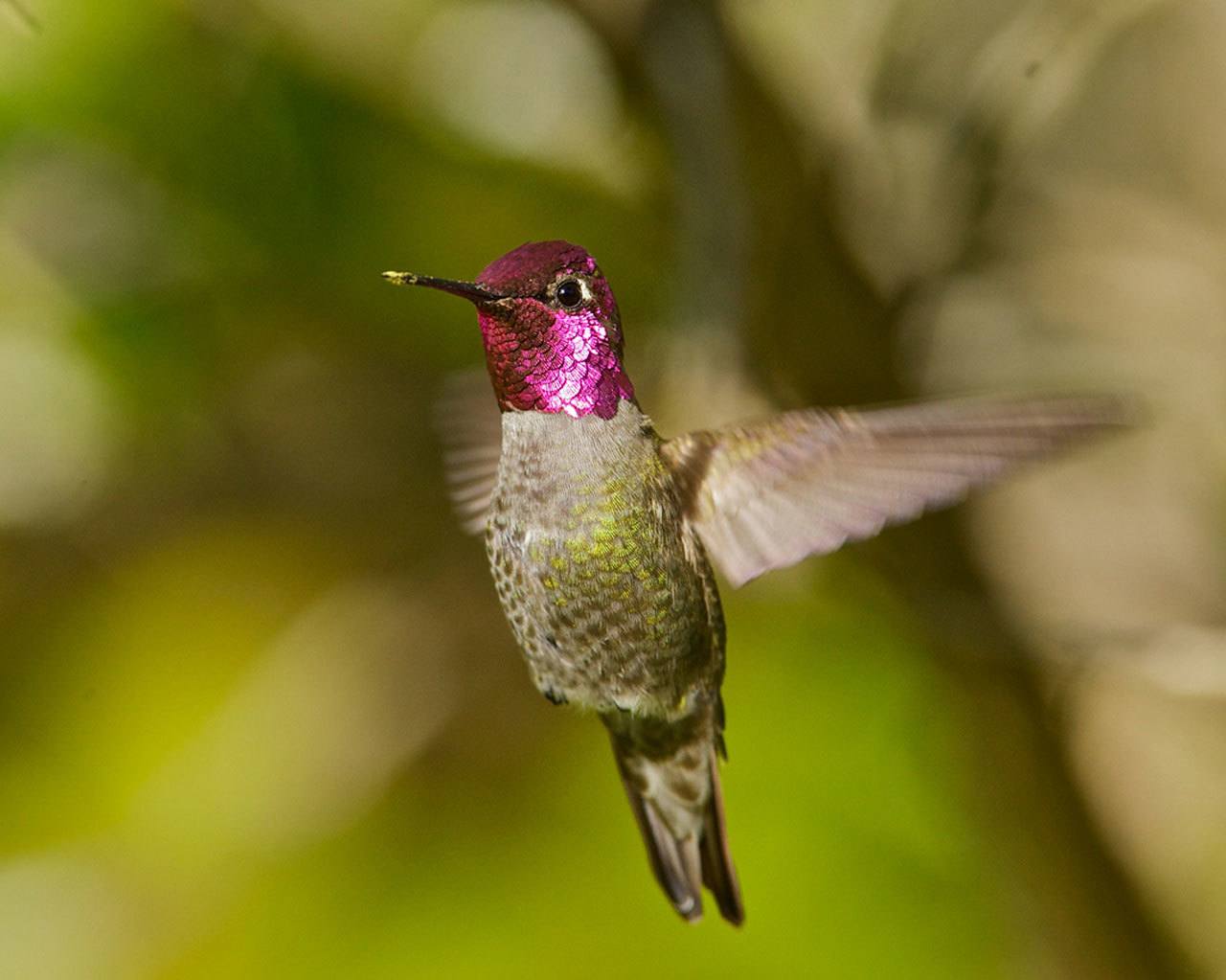Size: 4 inches
General Description: Hummingbirds are tiny, nectar and insect-eating birds that hover while feeding. Their shoulder joints are extremely mobile, permitting them to move the wing in a horizontal figure-eight pattern. This allows them to twist the wings so as to generate lift on both the backward and forward strokes, with the front edge of the wing leading on both strokes. They can move backwards, forwards or hover in place, and move very quickly from a “standing start.” The Anna’s Hummingbird is one of the medium-sized hummers and is found year-round in Washington. They have a relatively short, straight bill, and both male and females are green above and gray below.The male Anna’s have an iridescent red head and gorget (throat), and the females have green heads with a small throat patch of the same red. The females have white-tipped black tails, while the males’ are solid grayish-black.
Habitat: Anna’s Hummingbirds in Washington have moved from their traditional habitat of open woods and chaparral into suburban parks, gardens, and coastal valleys, where hummingbird feeders and exotic plantings provide them with food throughout the year. They defend their breeding and feeding territories throughout the year.
Behavior: The most distinctive behavior of the Anna’s Hummingbird is during courtship when the male rises high in the air and plummets in a downward arc, making an explosive, buzzy, chirping sound at the bottom of the arc. He then rises above, and facing her, delivers a brief, squeaky song, chases her to the nesting area, and flies rapidly back and forth in short, tight arcs in front of her. (The origin of the “dive noise” is thought to be either vocal or the sound of air rushing through his rapidly deployed tail feathers. The jury is still out on that.)
Diet: Anna’s Hummingbirds feed on nectar from flowers during spring and summer, supplementing their diet with tree sap, small insects, and spiders when available, especially the females when they alone are feeding their young. They use our sugar and water feeders most of the rest of the year. A team of ecologists found the average transit time through the gut is less than an hour, and 97 percent of the sugar is absorbed from the nectar (both flowers and feeders). Since their crops have to be at least half-empty before they can refill, their down time is spent digesting before they can feed again. This takes about 4 minutes.
Nesting: Hummingbirds are promiscuous; they do not form lasting pair bonds. The females construct the nest, incubate the eggs, and feed the nestlings on their own.The nest is most often built on the branch of a shrub or tree near a food source, varying from 3 to 27 feet off the ground. It is thick, well insulated, cup-shaped, and made of plant fibers and feathers, bound with spider’s silk, and lined with plant down and feathers. Building continues after two eggs are laid, with lichen added to the outer nest. The female incubates the eggs for 14 to 19 days, then feeds the hatchlings and cares for them herself until they become independent at 18 to 23 days.
Migration Status: Their migration has been described as “a succession of movements and temporary residences wherever suitable flowers and feeders are found”. It is unclear if the birds we see in January are migrants or the same as those we see in June, though speaking from my own experience and many of my friends the same birds are seen at my feeders throughout the year.
Conservation Status: In recent years Anna’s Hummingbirds have dramatically expanded their range, attributed to the many people who put out year-round feeders, and possibly to climate change.
When and Where to Find in the Twin Harbors: Anna’s Hummingbirds can be found anywhere flowers bloom, and in the winter, anywhere a hummingbird feeder is hung.


